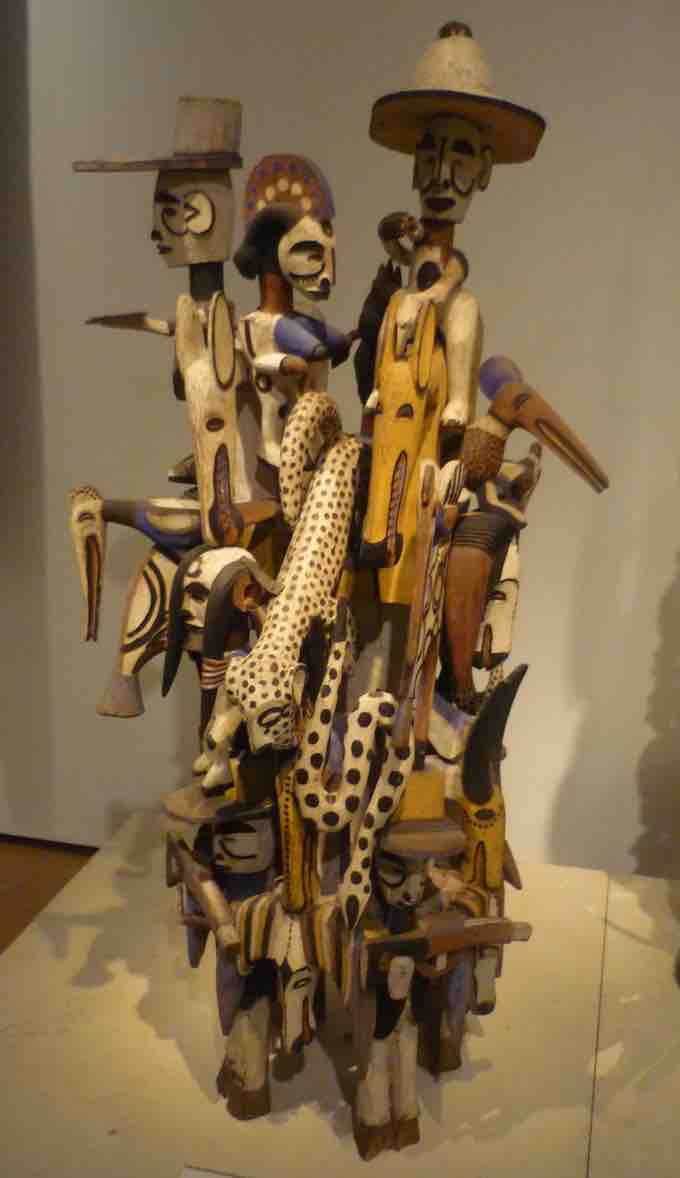Background: Igbo Culture
Igbo culture includes the various customs, practices, and traditions of the indigenous Igbo people of southern Nigeria. It comprises archaic practices as well as new traditions introduced to the Igbo culture either through evolution or outside influences. These customs and traditions include the Igbo people's visual art, music, and dance forms, as well as their attire, cuisine, and language dialects. Because of their various subgroups, the variety of their culture is further heightened.
Performing arts
The Igbo people have a musical style into which they incorporate various percussion instruments: the udu, which is essentially designed from a clay jug; an ekwe, which is formed from a hollowed log; and the ogene, a hand bell designed from forged iron. Other instruments include the opi (a wind instrument similar to the flute), igba, and ichaka. A widely popular musical form among the Igbo and throughout West Africa is Highlife, a fusion of jazz and traditional music. The modern Igbo Highlife is seen in the works of Dr. Sir Warrior, Oliver De Coque, Bright Chimezie, and Chief Osita Osadebe, who were among the most popular Igbo Highlife musicians of the 20th century.
Visual Arts
It is almost impossible to describe a general Igbo art style due to the heavy fragmentation of the Igbo people. This has added to the development of a great variety of art styles and cultural practices. Igbo art is generally known for various types of masquerades, masks, and clothing symbolizing people, animals, or abstract conceptions.
Bronze Castings
Bronze castings found in the town of Igbo Ukwu from the 9th century constitute the earliest sculptures discovered in Igboland. Here, the grave of a well-established man of distinction and a ritual store, dating from the 9th century CE, contained both chased copper objects and elaborate castings of leaded bronze. Along with these bronzes were 165,000 glass beads said to have originated in Egypt, Venice, and India. Some popular Igbo art styles include Uli designs.
Igbo bronzes
Bronze from the ninth century town of Igbo Ukwu, now at the British Museum.
Masks
Masking is one of the most common art styles in Igboland and is linked strongly with Igbo traditional music. A mask can be made of wood or fabric, along with other materials, including iron and vegetation. Masks have a wide variety of uses, mainly in social satires, religious rituals, secret society initiations (such as the Ekpe society), and public festivals, which now include Christmas celebrations. Best known are the Agbogho Mmuo (meaning "maiden spirit") masks of the Northern Igbo, which represent the spirits of deceased maidens and their mothers, symbolizing beauty.

Igbo Wooden Complex
Igbo Wooden Complex, currently in the British Museum.
Architecture
Mbari Houses
Igbo art is also famous for Mbari architecture. Mbari houses of the Owerri-Igbo are large, opened-sided, square planned shelters. They house many life-sized, painted figures (sculpted in mud to appease the Alusi, a deity, and Ala, the earth goddess, with other deities of thunder and water). Other sculptures are of officials, craftsmen, foreigners (mainly Europeans), animals, legendary creatures, and ancestors. Mbari houses take years to build in what is regarded as a sacred process. When new ones are constructed, old ones are left to decay. Everyday houses were made of mud and thatched roofs with bare earth floors and carved design doors. Some houses had elaborate designs both in the interior and exterior, including Uli art designed by Igbo women.
Nsude Pyramids
One of the unique structures of Igbo culture was the Nsude Pyramids, at the town of Nsude, in Abaja, northern Igboland. Ten pyramidal structures were built out of clay and mud. The first base section was 60 feet in circumference and 3 feet in height; the next stack was 45 feet in circumference. Circular stacks continue until they reached the top. The structures were laid in groups of five parallel to each other and served as temples for the god Ala/Uto, who was believed to reside at the top of the pyramids. Because they were built of clay and mud, time has taken its toll on the monuments, requiring periodic reconstruction.